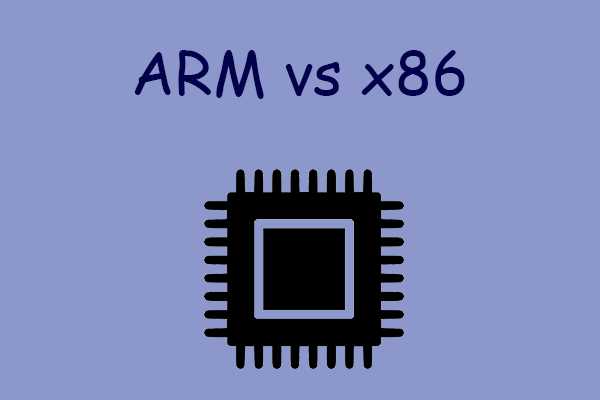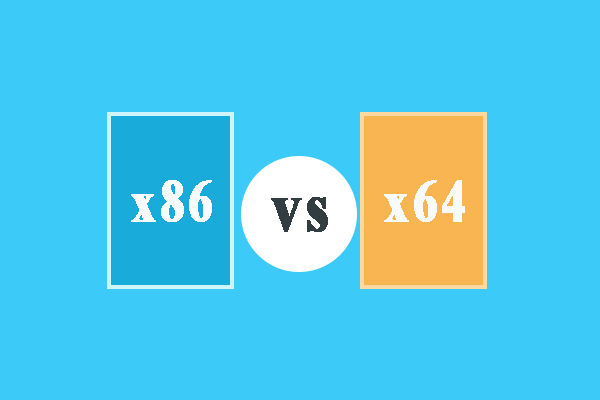Have you ever heard of RISC-V and ARM? Are you interested in them? If your answer is yes, you can find some useful information about ARM and RISC-V in this post, which is provided by MiniTool Partition Wizard.
What Is ARM?
ARM is the most widely used microprocessor worldwide. It originally stood for Acorn RISC Machine, but it was later changed to Advanced RISC Machine.
Now, it is a family of reduced instruction set computer (RISC) instruction set architectures for computer processors, configured for various environments.
ARM processors have low costs, minimal power consumption, and lower heat generation than their competitors.
ARM processors are designed for light, portable, battery-powered devices, including smartphones, laptops, tablet computers, and other embedded systems. They are also used for desktops and servers.
Up to now, ARM has been the most widely used family of instruction set architectures (ISA) and the ISAs produced in the largest quantity.
Further Reading:
1.What Is ISA?
The instruction set architecture (ISA) is an abstract model of a computer.
In general, an ISA defines the supported instructions, data types, registers, the hardware support for managing main memory, fundamental features (such as the memory consistency, addressing modes, virtual memory), and the input/output model of a family of implementations of the ISA.
What Is RISC-V?
RISC-V began development in 2010 as a project of UC Berkeley’s Parallel Computing Laboratory and has grown in 5 years. It is an open-standard instruction set architecture (ISA) that uses RISC principles for basic. This means that RISC-V is license-free and royalty-free. So, it can be used by anyone to learn, develop, manufacture, or sell the RISC-V chips and software.
Compared with many other instructions sets, RISC-V is not over-optimized for one implementation. It is suitable for all computing systems, from microcontrollers to supercomputers.
RISC-V vs ARM
The Similarities of RISC-V and ARM
- Both the RISC-V and ARM are basically RISC (Reduced Instruction Set Computer).
- Both the RISC-V and ARM use the load-store architecture. It means that data is loaded from memory, processed in the CPU, and then returned to memory.
- Both the RISC-V and ARM support 32-bit or 64-bit instruction sets.
The Differences Between RISC-V and ARM
Although the functions of RISC-V and ARM processor technology are similar, there are notable distinctions.
1. RISC-V is an open-source architecture, whereas ARM is proprietary.
This means that any designer who wants to include an ARM CPU into their design (for example, a SoC) must pay royalties to ARM Holdings. RISC-V, on the other hand, is open-source and does not require any royalties or licensing.
Although RISC-V allows designers to experiment and develop RISC-V systems for free, there is little to no support for hardware design. ARM, on the other hand, has teams of engineers working on hardware technologies that make it simple for designers to incorporate ARM CPUs.
2. RISC-V support is minimal, whereas ARM support is extensive.
Because RISC-V is such a new CPU platform, there is very limited software and development environment support.
ARM, on the other hand, offers a massive online community, support system, and libraries to assist designers in targeting a wide range of devices, including microcontrollers, microprocessors, and even servers.
3. RISC-V ‘s endianness is little endian, but ARM’s endianness is bi-endian.
The PISC-V’s endianness is little endian, meaning the least significant byte is at the smallest address. However, in ARM, memory addressing can be set to be bi-endian. This means the memory address can be described in either sequence of bits.
Bottom Line
From the above content on RISC-V vs ARM, you can see the similarities and differences between them. ARM has consistent support and a large market, but RISC-V has a large development space.
If you are interested in MiniTool Partition Wizard, you can visit MiniTool Partition Wizard’s official website by clicking the hyperlink. MiniTool Partition Wizard is an all-in-one partition manager and can be used for data recovery and disk diagnosis.

![How to Add Storage to Fire Stick OS 7/6/5 [A Full Guide]](https://images.minitool.com/partitionwizard.com/images/uploads/2022/07/add-storage-to-fire-stick-thumbnail.jpg)



User Comments :